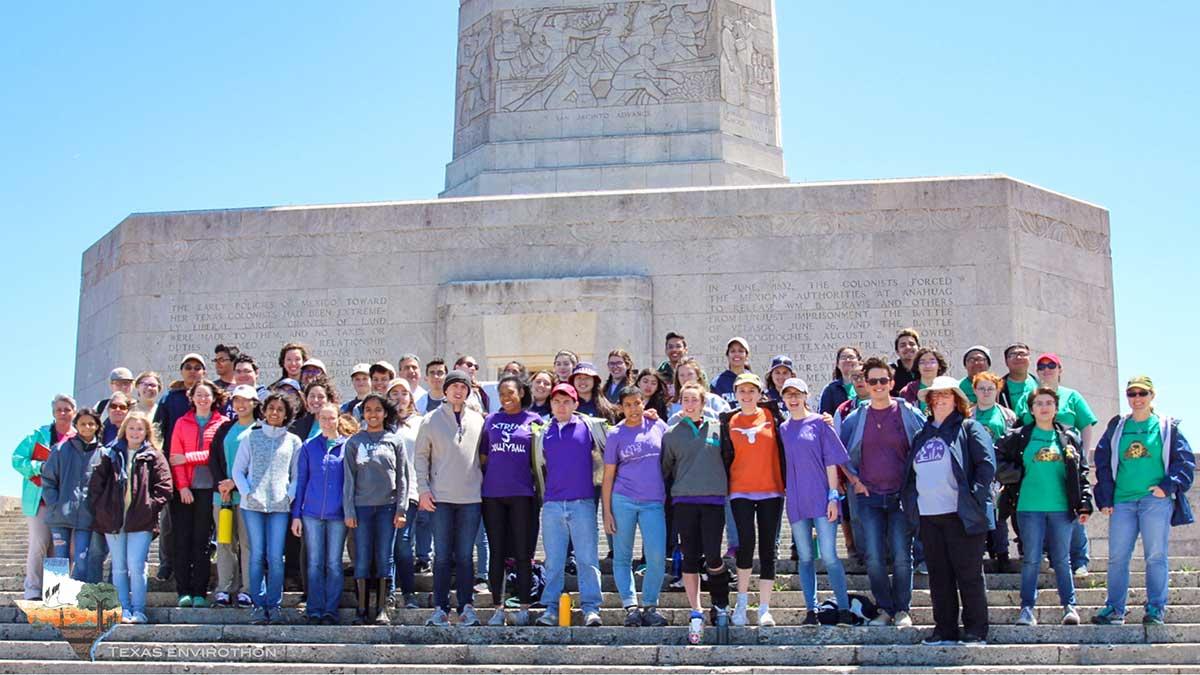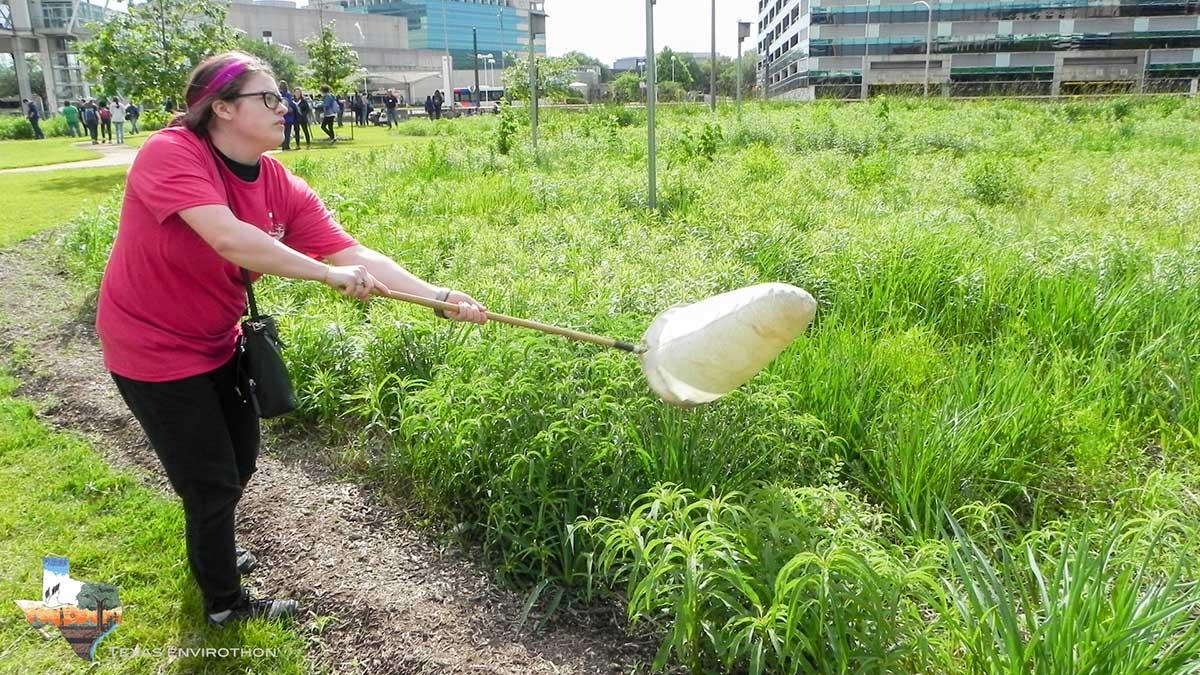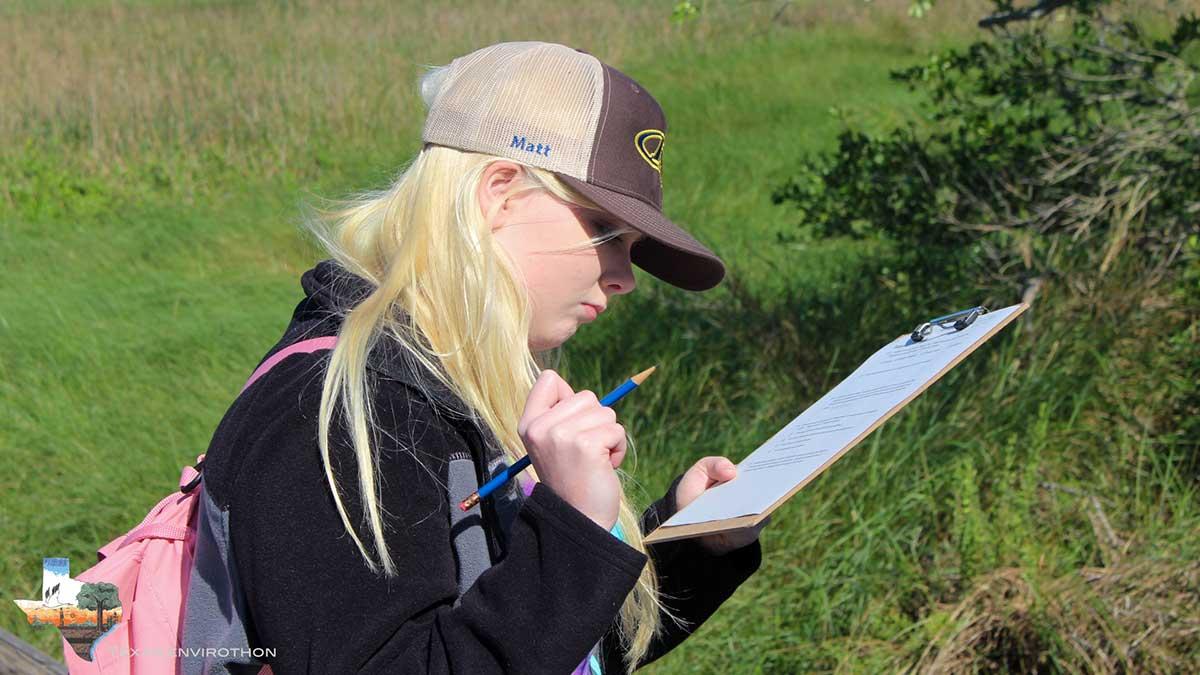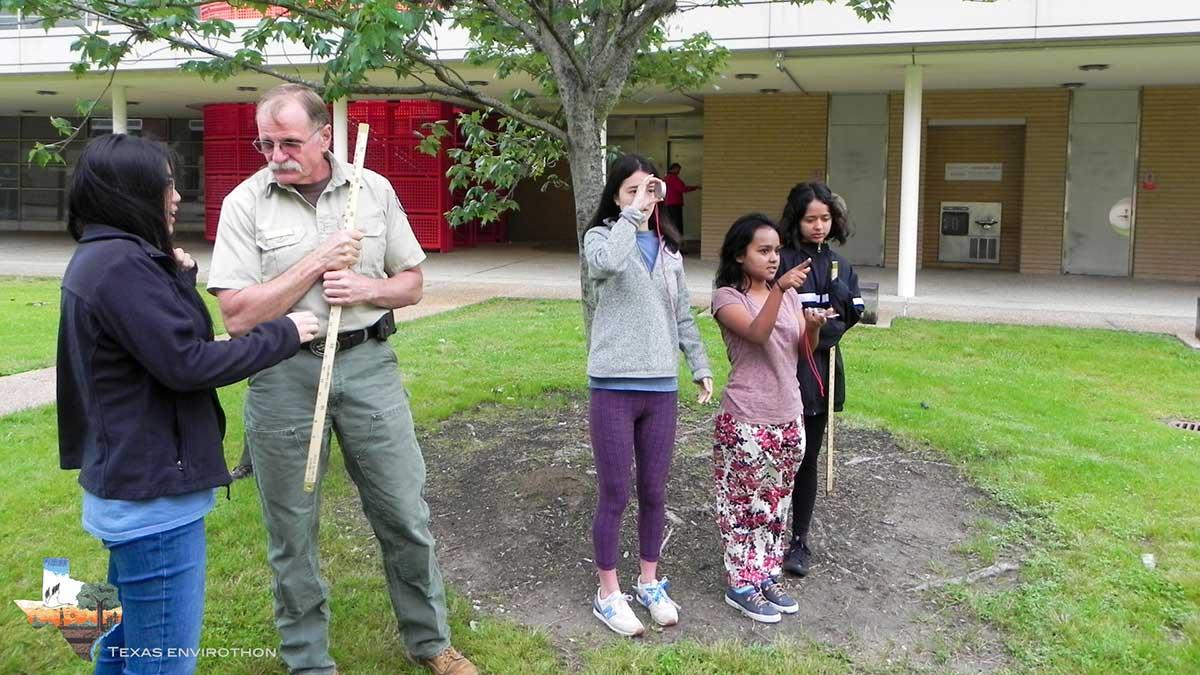
2018 Texas Envirothon
Houston
April 14–16, 2018
- 1st Place: Richardson High School
- 2nd Place: Academy of Science and Technology
- 3rd Place: Clear Lake High School
| Area of Study | School, Team |
|---|---|
| Aquatics | Richardson High School, Team Spartacus |
| Forestry | Academy of Science and Technology, Roadrunners |
| Soils | Science Academy of South Texas, Maroon |
| Wildlife | Academy of Science and Technology, Roadrunners |
| Current Issue | Academy of Science and Technology, Roadrunners |
| Oral Presentation | Richardson High School, Team Spartacus |
Financial support for the event was provided by conservation districts and natural resource related agencies and businesses from across Texas.
- Eastman Chemical Company
- LyondellBasell
- Engie North America
- Environmental Institute of Houston
- Gulf Coast Waste Disposal Authority
- Montgomery County Soil & Water Conservation District
- NCF-Envirothon/U.S. Forest Service
- Texas Association of Environmental Professionals
- Texas Forestry Association Education Fund
- University of Houston-Clear Lake
- Association of Texas Soil & Water Conservation Districts
- Harris County Soil & Water Conservation District
- Native American Seed
- Texas Association for Environmental Education
Hosts
- University of Houston
- San Jacinto Battleground State Historic Site
- University of Houston-Clear Lake
Sixteen teams representing 10 Texas high schools participated in the three-day competition.
- Academy of Science and Technology, The Woodlands
- Klein Collins High School, Spring
- Clear Lake High School, Houston
- Clear Springs High School, League City
- East Central High School, San Antonio
- Richardson High School, Richardson
- Rio Hondo High School, Rio Hondo
- Science Academy of South Texas, Mercedes
- St. John’s School, Houston
- The Woodlands High School, The Woodlands
Resources
Key Topics
- What is a coastal prairie?
- History of coastal prairie in Texas
- Multiple uses of coastal prairie
- Coastal prairie management—principles, strategies and tools
- Prairie conservation
- Prairie restoration, seed harvesting and storage
- Wetlands and flood management—the role of coastal prairie
- Species recognition
- Impact of loss of wild spaces, e.g., Nature Deficient Disorder
- How can coastal prairie management be used to maintain a balanced plant community to support livestock, Attwater's prairie chicken, as well as other wildlife and land uses?
- How can coastal prairie managers balance livestock production (grazing) with the maintenance of water quality?
Learning Objectives
- Characteristics (biotic and abiotic) and location of coastal prairie in the Western Gulf region and how it is currently managed.
- Demonstrate knowledge of how abiotic and biotic factors affect prairie conditions/health and strategies and tools that promote sustainable coastal prairies.
- Describe the various entities responsible for managing coastal prairies—private, state and federal agencies, and non-governmental organizations (NGOs).
- Ways to protect water quality within coastal prairie management.
- Demonstrate knowledge of grazing systems and how grazing is used as an effective management tool to reduce the spread and impact of noxious weeds, reduce catastrophic wildfires, and improve wildlife habitat.
- Demonstrate knowledge of coastal prairie plants, including identification, growth form, life span, season of growth, origin, and forage value.
- How different ecosystems (wetland, riparian, and upland areas) within the grasslands interact.
- How the use of the land by humans, domestic livestock, and wildlife affects the plant community.
- Demonstrate an understanding of multiple use on prairie (social, economic and ecological values).
- The rights of private landowners and citizens’ related to public land.
- Urban Pocket Prairies
- Grasslands
- Prairie Systems Atlas
- Southeastern Grasslands Initiative
- Paradise Lost? The Coastal Prairie of Louisiana and Texas
- Healing Prairies with Fire & Cows
- Why Prairie Matters—New Relevancies of a Vanishing Landscape
- The Last Stand: Saving the Coastal Prairie
- America's Grasslands: A Threatened National Treasure
- Preserving the Tallgrass Prairie
- Building Infrastructure for Collaboration: The Deer Park Story
Recommended Reading
- Coastal Prairie and Pothole Wetlands
- The McCartney Rose
- The Thirsty Tree: Confronting Invasive Salt Cedar in the American Southwest
- The Constant Gardeners
- Invasive Species: Chinese Tallow Tree
- Invasive Species: King Ranch Bluestem
- Prairies as Placeholders
- Attwaters Prairie-Chicken
- How Hurricane Harvey Affected Birds and Their Habitats in Texas
| Topic | Presentation | Download/Watch | ||
|---|---|---|---|---|
| Current Issue |
Armand Bayou Nature Center – A Case Study in Preservation, Restoration and Management Additional resources |
|||
| Current Issue |
Southeast Texas Grasslands: A Tour of the Region’s Origin, Ecology and Grassland Communities |
|||
| Current Issue |
Changes in the Prairie Ecosystem: Impacts on Restoration Additional resources
|
|||
| Current Issue |
Pollinators and other Wildlife of the Prairie Ecosystem Additional resources
|
|||
| Forestry |
Tree Identification Additional resources
|
|||
NCF-Envirothon
Western Rangeland Management
Key Topics
- What are rangelands?
- History of rangelands
- Multiple uses of rangelands (social, economic, and ecological values)
- Rangeland management (principles, strategies, and tools)
- Becoming a range professional
Learning Objectives
- Describe the biotic and abiotic characteristics of rangeland biomes.
- Discuss rangeland history and how it influences decisions today.
- Describe the various entities responsible for managing rangeland -private, state and federal agencies, and non-governmental organizations (NGOs).
- Demonstrate an understanding of multiple use on rangeland (social, economic and ecological values).
- Demonstrate knowledge of rangeland plants (including identification, growth form, life span, season of growth, origin, and forage value).
- Demonstrate knowledge of grazing systems.
- Demonstrate knowledge of how abiotic and biotic factors affect range conditions/health and strategies and tools that promote sustainable rangelands.
- Demonstrate awareness of career opportunities in rangeland ecology and management.












